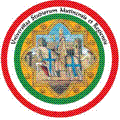|

By M.A. Todaro (2003 - updated October 2025)
Gastrotrichs are microscopic aquatic worms that range in body length from 0.06 to 3.8 mm. These acoelomate organisms are free-living and typically exhibit a meiobenthic lifestyle. In marine environments, they primarily inhabit interstitial spaces, while in freshwater ecosystems, they are commonly found as part of periphyton and benthos, and to a lesser extent, in plankton. In marine sediments, gastrotrich density can reach 364 individuals per 10 cm², making them one of the most abundant meiofaunal taxa and generally ranking third in abundance behind Nematoda and harpacticoid Copepoda. However, in some instances, they may be the first- or second-most prevalent group. In freshwater environments, their population density can reach 158 individuals per 10 cm², placing them among the top five most abundant taxa. Gastrotrichs play an important ecological role as microphagous and detritivorous organisms within the benthic community. Similar to free-living nematodes, they consume food such as microalgae, bacteria, and small protozoans by using a powerful sucking action from their muscular, myoepithelial pharynx. In turn, they serve as prey for carnivorous protists, turbellarians, and small macrofauna.
The phylum is cosmopolitan with, as of October 2025, over 900 species grouped into two orders: Macrodasyida, with about 380 strap-shaped species, all but four of which are marine or estuarine, and Chaetonotida with 520 mostly tenpin-shaped species, three-fourth of which are freshwater. Macrodasyida includes 10 families and 37 genera, whereas Chaetonotida counts 8 families and 37 genera. However, due to the numerous species, and at least one new genus that wait to be described, these statistics should be considered very conservative, particularly for the Chaetonotida.
The phylogenetic relationships of Gastrotricha, despite their diversity and abundance, have long been a topic of debate. Most researchers, while acknowledging the complexities in understanding the evolutionary connections of these organisms, have classified them as close relatives of Gnatostomulida, Rotifera, or Nematoda based on morphological traits.
In contrast, a re-evaluation of the phylogeny of "Aschelminthes," using SSU rRNA gene sequence analysis, positioned Gastrotricha as the sister group to Platyhelminthes. Subsequent studies have suggested various placements for Gastrotricha, associating them with either Ecdysozoa, Lophotrochozoa, or proposing they belong to neither group.
Further investigations employing molecular techniques, including 18S rRNA and expressed sequence tags (EST), indicated that Gastrotricha are part of Platyzoa. However, the monophyly of Platyzoa has been challenged by transcriptomic phylogenomic analyses, which identified Gastrotricha as the sister group to Platyhelminthes, forming a clade called Rouphozoa within Spiralia.
Recently, no compelling hypotheses or evidence have emerged that contradict the Rouphozoa hypothesis. Nonetheless, the discrepancies between morphological, traditional, and modern molecular perspectives on gastrotrich phylogeny highlight the need for further research in this area.
|






































